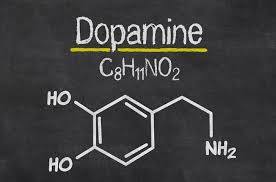Cortisol Response
Readers Summary
- How might I correct a cortisol problem?
- How might I deal with a low cortisol?
- How might I deal with a high cortisol?
Cortisol is a glucocorticoid hormone. It is the most important one in humans, produced by the adrenal cortex and participates in the body’s homeostasis and stress responses. Cortisol concentrations also follow a circadian rhythm. It is a more complex rhythm than the human melatonin rhythm. Unlike the melatonin rhythm, human cortisol rhythms do not seem to be totally associated with day and night per se but seem to be more closely tied to the “transition periods” from dark to light and to a lesser extent, from light to dark. Transitioning light levels play a tremendous role in cortisol rhythms in humans. In addition to its circadian rhythm exhibiting a predictable peak in the morning, cortisol levels typically elevate sharply in the morning, 30 minutes to an hour after awakening. The glucocorticoid levels synthesized by the adrenal gland across the 24 hour day appear to be under the control of two distinct systems, one governed by the hypothalamic-pituitary-adrenal (HPA) axis, and one controlled by the autonomic nervous system through the adrenal medulla. Evidence supports that cortisol production can be uncoupled from the HPA axis controller of its release (ACTH). Night time light stimulates the suprachiasmatic nucleus (SCN) and this sends a neural signal to the autonomic systems to increase cortisol production from the adrenal gland, but not the brain. This can happen via the skin because of opsins present in the skin and fat. This is not coupled to pulsatile ACTH release in the pituitary (POMC) and has separate neural pathways. Studies have shown that exposure to high levels of polychromatic (white) light (80 lux at the cornea) in the morning, but not in the evening, could increase cortisol levels in humans. It appears the intensity of light and the route we get the light stimulus is critical to the real effect on cortisol levels. Studies have also shown that morning light can increase heart rate, suggesting an impact of light on the autonomic nervous system that modulates cortisol release from the adrenal gland. More recent studies have shown bright light to dramatically reduces cortisol levels in humans. (Second Cite)
Artificial light has a ton of blue and green light in destroying the cortisol/DHEA/Melatonin cycle. Low melatonin destroys mitochondrial autophagy. Red light seems safest based on what we know today.
Most of the readers of this blog should already understand that the most common cause of elevated cortisol in the USA is from obesity, so weight loss garners a lot of attention as a key treatment modality to lower cortisol levels. Today, we are going to talk about cortisol more in depth in how we managed it clinically.

What to do when cortisol is low like in adrenal fatigue
Many believe that one can solve lowered cortisol levels by just eating more carbs. This sounds great on the surface, but no one should be dogmatic about this without a proper biologic context. Lets talk about why this is the case. Cortisol production can best be enhanced by correcting most of the other hormone deficiencies that influence the biochemical pathways used by the adrenal glands first. Rarely is cortisol insufficiency a hormone problem in isolation. Cortisol is also a slow acting hormone as it effects the cell. It usually occurs with several other deficiencies present. These further complicate its diagnosis and treatment correctly in my view. The best way to repair the lowered cortisol deficit is to optimize hormonal function and allow the body to re adjust to circadian cycles. Often, patients symptoms become so severe that waiting for allostasis is clinically not an ideal choice.
The principal hormone replacement therapies that can increase the secretion of cortisol and/or its action are by increasing the anabolic steroid and sex steroids like testosterone, dihydrotestosterone, and estrogen. This is true in both men and women. These are both potent stimulators of reestablishing the normal diurnal cortisol production in humans. The reason is quite simple. When the more distal sex hormones are all in adequate supply, very little shunting of the substrate hormone, pregnenolone, is taken away from adrenal cortisol production pathway. The same is true of DHEA levels to a lesser degree. This is classically seen in a pregnenolone steal syndrome. Most people with adrenal fatigue suffer some sort of co-morbid hormone issue due to the central retinal pathways connection to the pituitary.
Many people ask me about the importance of thyroid hormone in this clinical scenario. Thyroid hormones are only mild stimulators of cortisol production pathways in humans. Much stronger biochemical inhibiters of cortisol production are high growth hormone levels (great body comp), hyperthyroidism (low TSH levels), and those with melatonin excess (exogenous supplementation). So people with high IGF-1 levels, low TSH levels, and those who sleep well, generally have low cortisol levels. Mild inhibitors to cortisol production are those women on oral estrogen. BCP’s make adrenal fatigue more likely, as does fludrocortisone, and those with elevated aldosterone levels. People with high aldosterone levels have higher blood pressures. They also have lowered thyroid hormones, lowered sex steroid hormones as well. People with low blood pressures have lower cortisol levels and lower aldosterone levels. When people have low cortisol production in the morning, and increasing cortisol levels at night, there are many ways to naturally boost the cortisol levels to balance the circadian cycle back to normal.
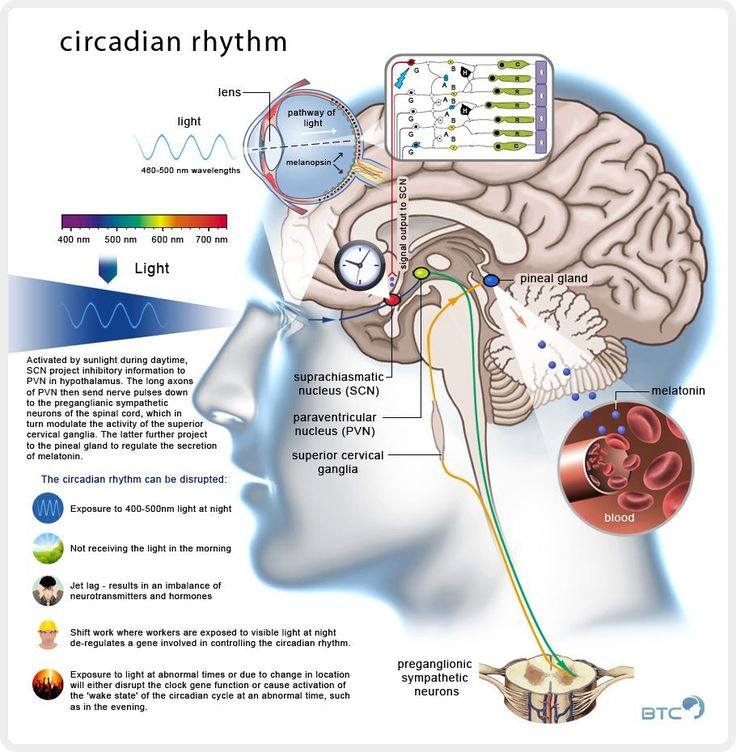
In the blogosphere, many default to recommend eating more carbohydrates to elevate cortisol in adrenal fatigue cases. They seem to think that the carbs are somehow the “magic bullet” for this condition. They are not the best choice in my view, but eating them will might help a person temporarily. Consumption of carbs will stimulate the ultradian cycle of cortisol production. This occurs because the presence of carbohydrates are associated with the longer light cycles seasons from an evolutionary timeline. Light in seasons has a power density relationship Light from the sun is the most effective way to alter your cortisol levels, because of its dramatic effects on the circadian cycle. If you don’t believe it, try eating carbohydrates in the winter for adrenal fatigue. This is usually an epic failure for patients clinically, because the light cycles are a stronger stimulus to an allostatic control of cortisol levels than carbohydrates are when the brain senses a short day via the eye. Why does this occur, you ask? Because sunlight or bright artificial light are potent effectors of the cortisol pathways via the retina and skin. The cortisol awakening response is highest at sunrise, due to a release of cortisol from the hippocampus in the brain. It is the hormone that wakes us up daily because it allows water to flow through our aquaporin gates. It is lowest at night when light ends. Bright light diminishes cortisol if the dose of light is high, while darkness seems to lower it as time increases in it. The cortisol awakening response is larger when people wake up in light rather than darkness. Therefore, light is the most effective means of controlling our cortisol production that we can use clinically.
Cortisol awakening response is increased in those who:
- waking up for a working day compared to the non working weekend day.
- experiencing chronic mental stress and emotional worry
- overloaded with tasks
- suffering the acute stress of any type via the PVN.
- are worn down by burnout (PTSD). Some studies find an increased though other researchers find a decreased or normal response.
Night time artificial light also raises cortisol levels, because our pineal-thyroid circuits have not evolved an off switch for artificial light as yet. Global control of gluconeogenesis is mediated by glucagon. Glucagon is released when our blood glucose is low and is unaffected by the light cycle. Glucagon generally is released from the human GI tract at night when we are sleeping to maintain our blood glucose while we sleep and not feeding.
Many patients report that a small amount of carbs help them sleep at bedtime. This is impossible if one’s liver is working correctly, because gluconeogenesis is turned off when glucose is present in our blood usually. When I hear this, I immediately know this person is compensating for another hormonal deficit. Only when we are in ketosis is gluconeogenesis stimulated! A small amount of dietary carbs should not be stimulatory to sleep, much less, the hepatic pathway of gluconeogenesis; low levels of carbs are instead required for it to occur. Glucagon augments ketosis further, and it is the failure of glucagon to act that actually promotes the adrenal pathways which might lead to adrenal fatigue if not enough carbs are eaten. In my experience, people with the highest risk of adrenal fatigue are generally those with blue light toxicity in the retina and results in poor hepatic gluconeogenesis, lowered dopamine production, and not from a lack of a dietary carbohydrates. One would be wise to adjust or tighten their light cycles first, then fix their liver problems next, before they consider eating a lot of carbohydrates to fix their adrenal fatigue first. Most people choose the carbohydrate pathway choice because it is most convenient in our current neolithic world. It is a horrible decision.There is nothing special biochemically about those people who are not at risk for adrenal fatigue. People most at risk for adrenal fatigue are those with poor gut/liver function, and they usually are LR or have low HDL’s on lab testing. I covered this in a previous blog here.
The principal lifestyle changes that you “might consider” strengthen the clinical effects of cortisol are as follows:
- Increase your exposure to sunlight, especially in the morning, and maximize darkness at night by sleeping with an eye mask at night and try to avoid all artificial light after dusk. New electronics put out unreal amounts of light, and completely destroy our normal circadian cortisol cycles more than any other behavior we engage in, including obesity. You must “tighten” your retinal exposure to sunlight, because this sharpens our brain’s perception of our circadian cycle of melatonin in the pineal-thyroid neural pathways in the brain. When you pay attention to the AM light cycle, it helps tremendously optimizing your appropriate diurnal cortisol levels during the day, and minimizes cortisol production at night. It is critical to avoid living and working in semi-darkness during the day. For example, a radiologist who works in a dark room looking at films all day is at big time risk for cortisol problems. People who work in mines during day break hours carry the same risk. People who work in semiconductor clean rooms under bright light at night carry the same risks as well. Following the light cycles for cortisol is a critical point that really should be followed strictly by all patients who are clinically trying to optimize their own cortisol levels daily. I also do not advocate wearing sunglasses in the daytime because of the circuit, no matter the season we are in. Humans tend to be very sensitive to loss of light in the winter months because of a lack of sunlight.
- At each meal, blood levels of cortisol normally temporarily triple regardless of macronutrients in the meal! Many people think that only dietary carbohydrates do this but this is not true. Dietary saturated fat (LDL levels/hydrogen) is necessary for the production of cortisol as saturated fat cholesterol is the first building block for cortisol synthesis. Carbohydrates do not form the building blocks of cortisol production at all. Our Epi-paleo template should aspire to avoid most alcohol, acids, caffeinated beverages, sugars and sweets, most soft drinks with fructose, most baked goods like bread, pastas and cereal grains. You should avoid all cereal fiber and all milk products, especially those with casein proteins to modulate cortisol levels. The blue light/nnEMF you allow the more salt you will need. An evolutionary blueprint is a great way to avoid these pitfalls.
- Beverages with caffeine (coffee, tea, cola) and alcohol should be avoided before bedtime as caffeine can increase cortisol (adenosine), and considerably reduce night-time secretion of melatonin from the pineal and retina. It also reduces serotonin from the gut used to help augment pineal melatonin production. Melatonin is a hormone that tends to reduce any cortisol production at night, improves mitochondrial function, and leads to autophagy/mitophagy. Remember that cortisol is supposed to be very low at night when melatonin is high. Sunlight in the AM lowers cortisol and adrenalin our blood. Melatonin production is increased in the retina and gut by a photochemical mediated pathway that converts serotonin to melatonin in the pineal gland after 4 hours of complete darkness. Dietary starches and sugars increase the blood sugar level, which in turn decreases gluconeogenesis, increases insulin, disturbs glucagon homeostasis, and reduces cortisol production. This is but another reason we might consider avoiding carbohydrates in the Leptin Rx reset protocol after dinner, on top of the insulin spikes that disrupt the leptin circadian cycle as well at night time. Carbohydrates out of season also deplete ATP compared to fats. They also decrease the amount of water produced in the matrix. Carbohydrates cause cells to swell through alteration of enzymatic kinetics due to proton issues. This slows the energy substrates that re-form ATP in our mitochondria. This slows our ability to replenish energy and decreases sleep efficiency at night. It also is clinically correlated with poor cortisol and DHEA levels.
- The excessive and prolonged stress of any kind exhausts the adrenal glands because of changes in the retina and brainstem at the paraventricular nucleus. Dopamine control of prolactin is lost. This renders them less efficient to produce adequate amounts of cortisol, and might lead to adrenal fatigue. Testing the cortisol to sex steroid hormones ratio easily tells us if this is a clinical problem. I do not advocate treating this without testing at all. I also use DHEA levels to do this in “more fit” or “ripped” people, because it is even more accurate in diagnosis in my experience. Evening or night-time stress is a very strong stimulator of cortisol secretion, and quickly depletes the adrenal supply of cortisol. This results in decreased cortisol levels for the next morning at a time when the serum level of cortisol should be high. This is one of the most common findings on salivary cortisol assays.
What about cortisol supplementation?
Cortisol supplementation may provide one of the most rapid improvements of all the hormone replacements. The one thing to pay attention to is that bio-identical replacement is a better choice than synthetic options. This is due to the optimal chemical transduction at the receptor level related to an oddity of proton spin. Moreover, the bio-identical preparation gives a more consistent clinical result in my experience. I see many people on low dose prednisone or hydrocortisone replacement that still struggle. Often changing the med is all that is needed to help the clinical scenario. The higher the initial dose, the quicker the short-term benefit, but it is quite short lived. More often, the requirement for reversal is low doses with over many months to ramp up to effect.
Patients on cortisol therapy may improve during the first days of intake, but complete recovery from physical signs and symptoms of cortisol deficiency takes more time in most cases in my experience. With patients who have slower response to therapy, optimal results may take as much as two to three months. If someone requires long term replacement, the physician has to seriously consider the long term pituitary effects of HPA suppression. These are very serious clinical matters not to be managed without a physician in my view.
Often a lack of clinical response is most often attributed to a poor diet. This is a diet usually high in carbs and PUFAs in unison, and low in all fats, classically described as the SAD. Therefore, the patient should be encouraged to migrate to a Epi-paleo palate as a way of accelerating the progress of healing. Epi-paleo Rx is the quickest way to destroy the cytokine storms that destroy cortisol and the gut barrier, BBB, and the lung’s barriers. It also decrease IL-6 to improve sleep and DHEA levels.
Once treatment has begun, fine-tuning the dosing means finding the optimal dose for the patient and not a dose that is slightly too low or too high. This process is primarily achieved by carefully checking physical signs and symptoms and much less by relying on lab tests. The optimal dose is the dose that relieve the patient completely from the symptoms of cortisol deficiency without causing any signs of cortisol excess. Dosing by lab testing usually helps to mitigate severe over or under dosing during treatment, but I have found them less helpful for the fine tuning needed clinically. I find paying attention to the clinical symptoms is paramount to accurately treating the patient issues. The optimal dose may vary following changes in the need for cortisol.
Cortisol can usually be started at an estimated dose based upon clinical symptoms. This is how a clinician treats the effect of the steroid at the receptor level. Most serum cortisol, all but about 4 percent, is bound to proteins, including corticosteroid binding globulin, CBG, and albumin. Only free cortisol is available to bind to receptors to give the clinical effect. The minimal efficient dose in most women is usually 15 – 20 mg per day. In men, it is greater, about 30 mg per day, usually divided in at least two separate doses. One can be given in the morning and one at noon to follow the normal circadian rhythm of cortisol.
There are two other fundamental contraindications to cortisol supplementation.
- If you do not need it, you should never take it. This must be based upon normal salivary cortisol assays, and not just symptoms! If there is no salivary testing, no Rx should be given a period for bio-identical cortisol. I take it further. I do not advocate any Rx for cortisol, even if one has an abnormal serum cortisol level over a salivary cortisol assay. Serum cortisol levels are notoriously inaccurate while salivary testing is very accurate. If one is not sure of the true level at the correct time of the day, cortisol treatment will not optimally help the patient and may cause harm. I use natural signaling to restore the cycles.
- Cortisol supplementation should not be a first line treatment option if other hormone deficiencies exist. Repairing the light exposure via the retina should be the first move. This is the predominant reason that I do not see a big clinical need for cortisol replacement often. I personally have never seen a patient with an isolated cortisol problem unless they have a pituitary, adrenal, or carcinoid tumor that secretes cortisol in some fashion. In cases like these, even appropriate replacement doses of cortisol may cause harm. It becomes imperative that a thorough history and physical for endocrine abnormalities is done in all cases. If the patient does not have sufficient levels of anabolic hormones such as DHEA, and the sex hormones to counter cortisol catabolic effects the balance of this system can be altered with consequences. The catabolic effects of cortisol can cause excessive breakdown of the tissues of the body. This is classically seen in the loss of muscle, bone, and cartilages of the body. Some of the clinical findings we see are is sarcopenia, osteoporosis, skin atrophy, ecchymosis, petechia (spider veins), and immunosuppression. I am very leery of using cortisol to treat cases of adrenal fatigue because of these findings. Adrenal fatigue is a brain stem disease and not an adrenal disease at its core.
What are the signs of cortisol insufficiency and excess?
I have covered the signs and symptoms of adrenal fatigue in a blog post, What might Casey Anthony and OJ have in Common?
The most common finding is obesity (hypercortisolism) is truncal obesity. This signifies a lot of abdominal fat and the presence of fatty liver disease. The effects of cortisol are relative to the time it is raised. This is the context that it must be placed in during a bio hack. The principal mental and emotional signs and symptoms of cortisol excess after several hours to several days are overly emotional, excessive agitation, euphoric, insensitive to human suffering, a craving of stress and often creates their own stress to satisfy their physiologic needs, stressing others out to create an environment of stress but not stressing themselves out. After several hours of elevated levels, we also see a significant reduction of thyroid and insulin levels in the adrenal gland of the same patient. Insomnia is often a critical finding in elevated cortisol cases, and is commonly tied to very low DHEA levels and low melatonin levels. Women tend to show significant defects in pregnenolone and progesterone with increasing age or sleep problems.
The principal physical signs and symptoms of cortisol excess after several consecutive days are, cardiac erethism (heart pounding in the chest) and or anxiety. When this effect persists, we can see swollen hands and feet, swollen face especially around the eye lids, elevated basal blood pressures are very common as well. After several weeks to several months of chronic cortisol elevation, we commonly see, excessive weight gain, frank morbid obesity, ecchymosis or easy bruising of the skin, petechiae (tiny skin hemorrhages) before cortisol cycles crash and flatline. After six months we see atrophic skin, altered immunity, and severe osteoporosis develop. With chronic severe elevation, we can also see chronic adrenal fatigue in some people. These last two symptoms often occur in patients where the physician does not expect to see either clinical finding as well. I personally have seen more osteoporosis in younger patients than I was ever taught to expect, so I am very cognizant of looking for this. The skin issue is seen when we close many of their surgical wounds if the surgeon is paying attention. Another sign I see is the fat replacement in the muscle bellies that are adjacent to my surgical planes of dissection. These are the clues I use at surgery to consider what the patient’s underlying physiology may reveal. Often, I gain these insights by thoroughly reviewing the patients MRI’s that they come to me for spinal disease. Rarely, does the radiologist mention these abnormal finding,s because I think they have become so common that they are not felt to be that abnormal. It is akin to a “crying wolf” scenario and requires the clinician to be very aware of what chronic excessive cortisol can do. Often the mental, emotional, and obesity effects on cortisol are ignored by healthcare providers. In my clinic, I believe that over 90{a7b724a0454d92c70890dedf5ec22a026af4df067c7b55aa6009b4d34d5da3c6} of the cases I see have a cortisol etiology at its core.
When someone is stressed and has an altered cortisol level, one could consider adding B6, Mg, and CoEnZ Q10, L-carnitine, and D-Ribose as adjuvants to therapy if they are on a suboptimal diet, but there are smarter moves to make first. I also like to see B12 levels that are high and hovering above 1000 pg/mL with a low homocysteine level and low calcium index score. I also look for greying of the hair and increased wrinkling of the skin to see how a cortisol level maybe affecting other hormones in the cascade. Chronic fatigue is another symptom to pay attention too as well for hormone cascade abnormalities which links to the spin rate of the ATPase.
Your Shopping List for this Post
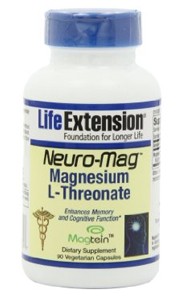 |
 |
| Life Extension Neuro-Mag Magnesium L-Threonate |
Life Extension Super Ubiquinol CoQ10 with Enhanced Mitochondrial Support |
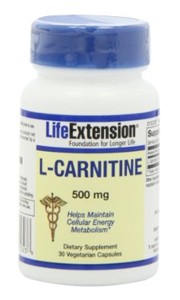 |
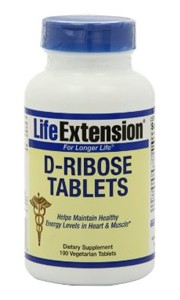 |
| Life Extension L Carnitine |
Life Extension D-Ribose Tablets |
Additional Resources
- Brain Gut 6: Epi-Paleo Rx
- Brain Gut 11: Is Technology An Achilles Heel?
- Brain Gut 16: Adrenal Fatigue Rx
- Hormone CPC #1: DHEA
- Your VAP = Brain Gut Axis Function
- What might Casey Anthony and OJ have in Common?
- My Leptin Prescription
Cites
- F. A. J. L. Scheer and R. M. Buijs, “Light affects morning salivary cortisol in humans,” Journal of Clinical Endocrinology and Metabolism, vol. 84, no. 9, pp. 3395-3398, 1999.
- http://jbr.sagepub.com/content/25/3/208.abstract (effect of bright light on human cortisol levels)
- R. Leproult, E. F. Colecchia, M. L’Hermite-Balériaux, and E. Van Cauter, “Transition from dim to bright light in the morning induces an immediate elevation of cortisol levels,” Journal of Clinical Endocrinology and Metabolism, vol. 86, no. 1, pp. 151-157, 2001.
- Thorn L, Hucklebridge F, Evans P, Clow A. (2006). Suspected non-adherence and weekend versus week day differences in the awakening cortisol response. Psychoneuroendocrinology. 31(8):1009-18. PMID 16876958
- A b Schlotz W, Hellhammer J, Schulz P, Stone AA. (2004). Perceived work overload and chronic worrying predict weekend-weekday differences in the cortisol awakening response. Psychosom Med. 66(2):207-14. PMID15039505
- Steptoe A, Cropley M, Griffith J, Kirschbaum C. (2000). Job strain and anger expression predict early morning elevations in salivary cortisol. Psychosom Med. 62(2):286-92. PMID 10772410
- Rohleder N, Beulen SE, Chen E, Wolf JM, Kirschbaum C. (2007). Stress on the dance floor: the cortisol stress response to social-evaluative threat in competitive ballroom dancers. Pers Soc Psychol Bull. 33(1):69-84. PMID 17178931
- Grossi G, Perski A, Ekstedt M, Johansson T, Lindström M, Holm K. (2005). The morning salivary cortisol response in burnout. J Psychosom Res. 59(2):103-11. PMID 16186006
- De Vente W, Olff M, Van Amsterdam JG, Kamphuis JH, Emmelkamp PM. (2003). Physiological differences between burnout patients and healthy controls: blood pressure, heart rate, and cortisol responses. Occup Environ Med. 60 Suppl 1:i54-61. PMID 12782748
- Pruessner JC, Hellhammer DH, Kirschbaum C. (1999). Burnout, perceived stress, and cortisol responses to awakening. Psychosom Med. 61(2):197-204. PMID 10204973
- Mommersteeg PM, Heijnen CJ, Verbraak MJ, van Doornen LJ. (2006). Clinical burnout is not reflected in the cortisol awakening response, the day-curve or the response to a low-dose dexamethasone suppression test. Psychoneuroendocrinology. 31(2):216-25. PMID 16150550
